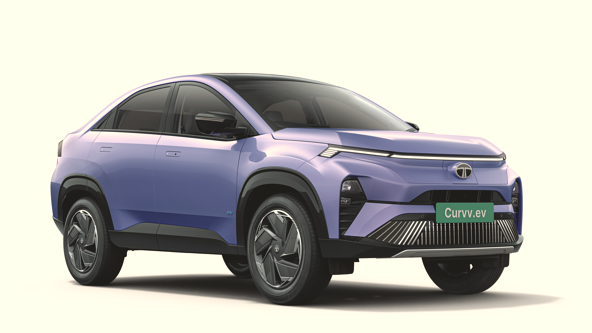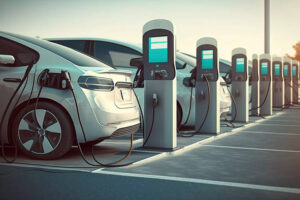
There was a time when a car’s grille was an iconic design element, almost like a signature that instantly identified the brand and model. But with the rise of Electric Vehicles (EVs), that distinctive grille design is becoming less of a focal point. EVs don’t require large grilles for cooling the engine, allowing designers to move away from traditional aesthetics.
Today’s EVs often lean toward a minimalistic, streamlined look, reflecting their tech-forward identity. The focus is shifting to sleek, clean lines, larger digital displays, and seamless integrations that make the vehicle feel more like a gadget than a machine. This democratisation of design means EVs are now differentiated less by their front-end design and more by the technology, user experience, and premium features they offer. This trend aligns with consumer preferences for futuristic, smart, and sustainable mobility solutions, making EVs more about their digital prowess than their external styling.
It’s an exciting shift, but one that also marks the end of a more nostalgic era of car design where form followed function in a very different way.
ETAuto spoke to Vivek Srivatsa, Chief Commercial Officer, Tata Passenger Electric Mobility Ltd. to understand the company’s strategy towards EV design and its overall transformation for a complete tech-laden approach. The company has been positioning itself at the forefront of the EV revolution, with a clear emphasis on tech-driven design.

With models like the Tata Punch.ev, Nexon.ev, Tiago.ev, and the latest Curvv.ev, the company has been pushing the boundaries of what an EV can represent. The company is not just designing cars but creating smart mobility solutions that appeal to a generation seeking more than just appearance—it’s about connectivity, advanced features, and the feeling of driving a tech-laden gadget on wheels. This approach reflects a transformation where personality and functionality are intertwined with the latest tech innovations, making Tata’s EVs stand out in the crowded marketplace.
“Tata Motors’ EVs have their own character and we are building on them further. It is not just about the grille but dimensions and design themes. Today, our EVs have a closed-out grille along with signature LED DRLs and how the T logo sits all these together give them certain personality and character, aiding them to carry a more tech gadget appearance,” says Srivatsa.
Highlighting on how the design of EVs have evolved with the focus on making them have a technology-first led appeal, Srivatsa, shares, “In 2020, when we launched the Nexon EV, we added certain specific elements to the grille of course, but also to certain other areas of the car, including an electric blue colour highlight that showcased that it is an EV. This was the only major difference in the Nexon ICE and Nexon EV on the outer appeal. However, now what you see, the EV versions of our Nexon or the Punch, they look extremely different from their ICE versions.”
He adds, “we are working on making slight changes in the personality to differentiate between the products. Our bigger intent is to never have our EVs mistaken for an ICE. Both will have their distinct character and appeal.”
Srivatsa points that the democratic approach across all variants is pivotal, especially when considering that EVs are increasingly viewed as tech products rather than traditional automobiles. “While the key differentiator in EVs will be colour and material used, they would not dramatically look different. And that is the direction that we are going towards. Just like in a mobile phone, wherein it matters more on what tech powers it and features inside, similarly in EVs tech will be the key puller than just the looks. Colour will be a big choice alongside the tech-enabled features.”
On the design side, EVs are undergoing a shift towards less complex design on the interiors. “Probably, we will be moving a lot away from the traditional black interiors to lighter colour interiors to signify tech and premiumness. Lighter interiors also improve battery life and its usage to some extent.”
Large screen displays are becoming a staple in EVs, as drivers and passengers expect a more interactive and multifunctional experience. The shift towards digital interfaces is equally transformative, with more controls migrating from physical buttons to touchscreen panels. “You will see more and more controls getting into software rather than hardware. The controls will not have physical switches but touch screen operations. For instance, in our new products, we have moved AC controls in a touch panel rather than traditional buttons.”
On the functional side, EVs are being engineered to maximise efficiency and range. One of the key factors in this is reducing the vehicle’s drag coefficient—the measure of how much aerodynamic resistance a car faces while moving. By making the car more streamlined, including the redesign of the grille (or “nose”) and utilising aerodynamic alloy wheel inserts, EVs can reduce wind resistance, which in turn extends their range. “We also have low rolling assistance tyres in our EVs that does not have too much friction with the road when it is moving, this too enhances the range.”
Discussing the significant shift in buyer profiles between an EV customer and an ICE (Internal Combustion Engine) customer, Srivatsa highlights key behavioural differences. “Currently, a traditional ICE customer is someone who prefers minimal interaction with the OEM and is less demanding. They only want to reach out or want to be reached out to when there is a fault with their vehicle or when they want to upgrade their vehicle.”
In contrast, “an EV customer is someone who will actively seek interaction opportunities with the OEM and prefers avenues of frequent communication. An EV customer builds his community around him, and willingly serves as a brand ambassador without financial incentives, becoming true brand evangelists. This is very similar to the consumer behaviour displayed by that of consumer electronics.” Moreover, this shift demonstrates that EV customers are not just purchasing a vehicle; they are investing in a tech-driven experience and looking to be part of a connected, future-forward ecosystem. Even giving way for direct sell of EVs via websites.
India sold close to 130,000 EVs, and every month there is growth in the EV industry. The Indian customers are rapidly changing and are very fast to mature across categories. They are readily embracing technology and trends.
To learn more about the electric vehicle ecosystem and meet the key industry leaders, click here.






